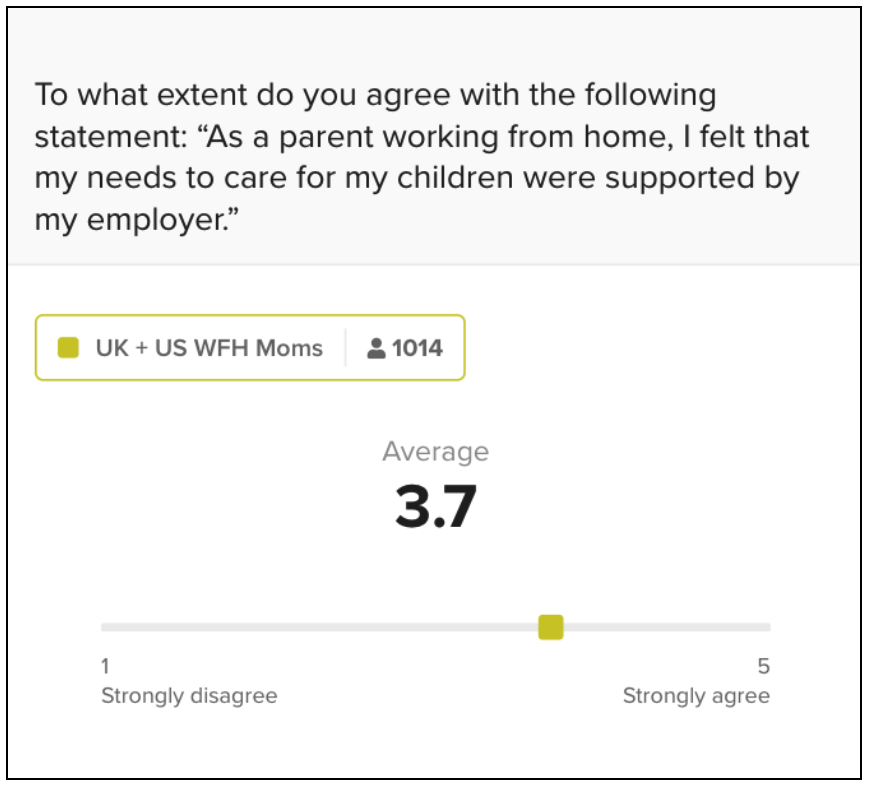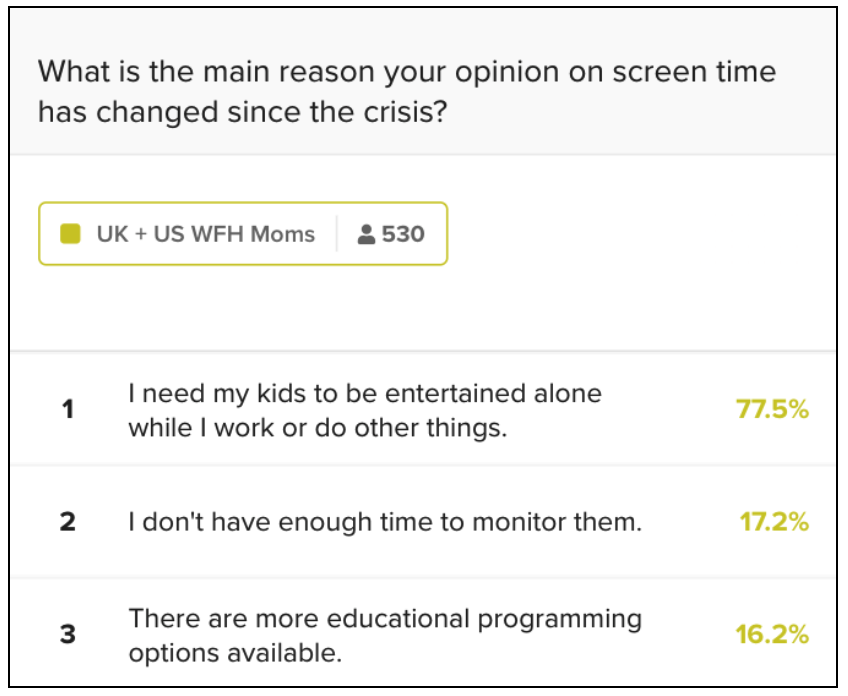This is the 7th insights digest of Segmanta’s Life During COVID-19 study. We conducted research in the US and the UK to understand how the recent pandemic has impacted consumerism, personal relationships, the job market, along with general beliefs and concerns during this unusual time. More than 2,000 respondents completed the survey.
The COVID-19 pandemic allows us to spend more family time, but parents, especially those who have to work full-time, struggle to balance their efforts between childcare and work. Many of our respondents, 85% of whom are moms, claim that important aspects across their jobs are significantly affected when their children are home from school or daycare. In this article, we profiled mothers from the U.K. and the U.S. who worked mainly from home during the COVID-19 crisis:
86% of the surveyed U.K. moms who work from home are between the ages of 31 to 44. Roughly 50% of them have 2 children, the majority (24%) of whom’s youngest child is 5 years old or older. 60% of these U.K. mothers share childcare duties with their partners so that both partners can work during the pandemic.
Among the surveyed moms in the U.S. who work from home, 81% are 31 to 44 years of age. The majority (35%) of whom’s youngest child is 0 to 1 year old. For many work-at-home moms, younger children require more work as they are considerably less independent.
Kudos To The Supportive Employers During The Crisis
Moms from both countries somewhat or strongly agree (3.7/5.0) that their needs for childcare are supported by their employers. According to a study by Boston Consulting Group, many companies in the U.S. are allowing more flexibility in working hours, deadlines, and workloads. Meanwhile, U.K.-based research showed that 9 out of 10 parents would like their employers to retain a flexible work schedule post-COVID-19.

Keeping Up Productivity Is Tough
Most mothers from both countries say they experience a minor impact on productivity when it comes to attending or participating in virtual work meetings at home with their children around. However, the majority claims that completing planned tasks and fully working the planned hours were most impactful on their productivity as a work-at-home mother. With children spending long stretches of time at home, work-at-home moms face constant distraction. In addition, without their regular office environment (including face-to-face communication, in-person meetings, convenient office supplies, etc.), many employees face challenges in maintaining focus like never before.
“Mommy! Mommy! Mommy!”
Over 70% of moms from both countries say that keeping their children busy and entertained to be the most challenging aspect of working from home with kids during the pandemic. 64% of them also struggle to attend to their children’s needs during working hours. Although less than ideal to juggle simultaneously between work and childcare, employees around the world are all coping together, so that with background noise or even when children that interrupt a work meeting, all can relate on a more personal level. We are only human after all.
Parents Are Forced To Allow Extra Screen Time
Entertaining restless children during home quarantine can be a real head-scratcher. Most mothers (72%) from both the U.S. and U.K. choose to give their kids extended screen time, and the most common reason (78%) for doing so is to keep kids busy on their own so that parents can focus on work and other home tasks.

. . .
Generally, parents in our survey reported having a pleasant time bonding with their children, thanks to extra family time. While hoping hectic new routines during the pandemic will pass soon, working parents are learning to adapt. Many parents turn to baby tech products like smart monitors, smart toys, smart cribs to ease their stress with childcare. Companies like Google actively seek options to improve children’s education and health by introducing virtual classrooms and playgrounds to ensure a safe environment and further relax exhausted parents during the lockdown. Since the pandemic, more and more brands are starting to shift their focus onto new demands and opportunities triggered by social distancing, aiming to solve people’s pain points during the adaptation to new norms.

